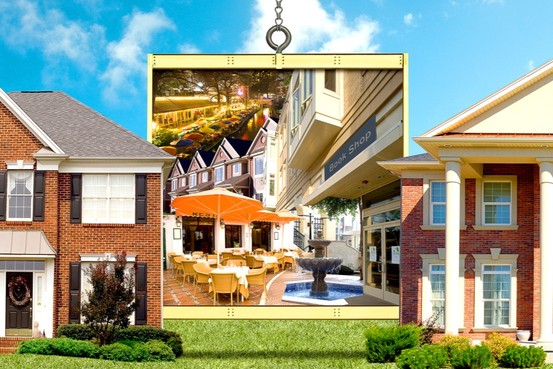A New Kind of Suburban Church
Sam Rainer
Almost half of the U.S. population lives in the suburbs. And sprawling suburbia is changing. The WSJ recently reported that the place where people grew up will change as they grow old. The suburbs are graying, and there is a movement to make them more compact.
While large tracts of single-family homes are not being demolished, struggling shopping centers and vacant land in the suburbs are being converted into dense, mixed-use neighborhoods. In short, the ‘burbs are getting a retrofit. The goal is a lifelong, walkable community – a small-town atmosphere, complete with town center – live, shop, work, and play without hopping in the car.
The movement is driven by the changing life demands of the Boomers. The senior population is expected to increase 36% between 2010 and 2020, driven mainly by the aging Boomer population. For example, today 1 out of 10 Atlanta area residents are over 60. In 2030, it will be 1 out of 5.
The Boomer generation was the first generation to live their entire lives in the suburbs. A good portion of them will stay as they age. An AARP survey cited in the WSJ article revealed that 85% of those over 50 want to remain in their communities. More than 30 million people over 55 currently reside in the suburbs, and that figure will continue to grow over time.
The retrofit trend is expensive and will not explode overnight (especially in the current economy). Every suburb will not get a makeover, but the trend will become more prevalent over the next several years. Church leaders need to be prepared for demographic shifts in their communities – diversity is spreading out and getting younger, downtowns are gentrifying, and the suburbs are getting grayer.
How should a local church reach the aging, suburban Boomer? The options are numerous: multi-site campuses in new suburban town centers, leasing storefront space, small groups meeting in recreation centers, and video venues, among many others. I’m not advocating an entire paradigm shift for suburban community outreach (though some churches could certainly use a paradigm shift). How churches reach out is less of an issue than will churches do anything intentional to reach this exploding part of the population.
Boomers will become the new “seniors.” How senior adult ministry was done with the previous generation, however, will not be as favorable with the Boomer generation. There is just as large a generation gap between the Boomers and the Greatest Generation as there is between Boomers and their children. Boomers are less likely to be attracted to group entertainment events. Boomers are more likely to have women who worked in professional positions. Boomers are more likely to have been divorced. Boomers are more educated than previous retirees. As ministry methods change with younger generations, so too they must change with older generations.
I’d like to hear your thoughts – do you know of any suburban churches making positive shifts to reach the aging Boomer population? Are there any churches that are making plans to reach out to new suburban town centers?








One comment on “A New Kind of Suburban Church”